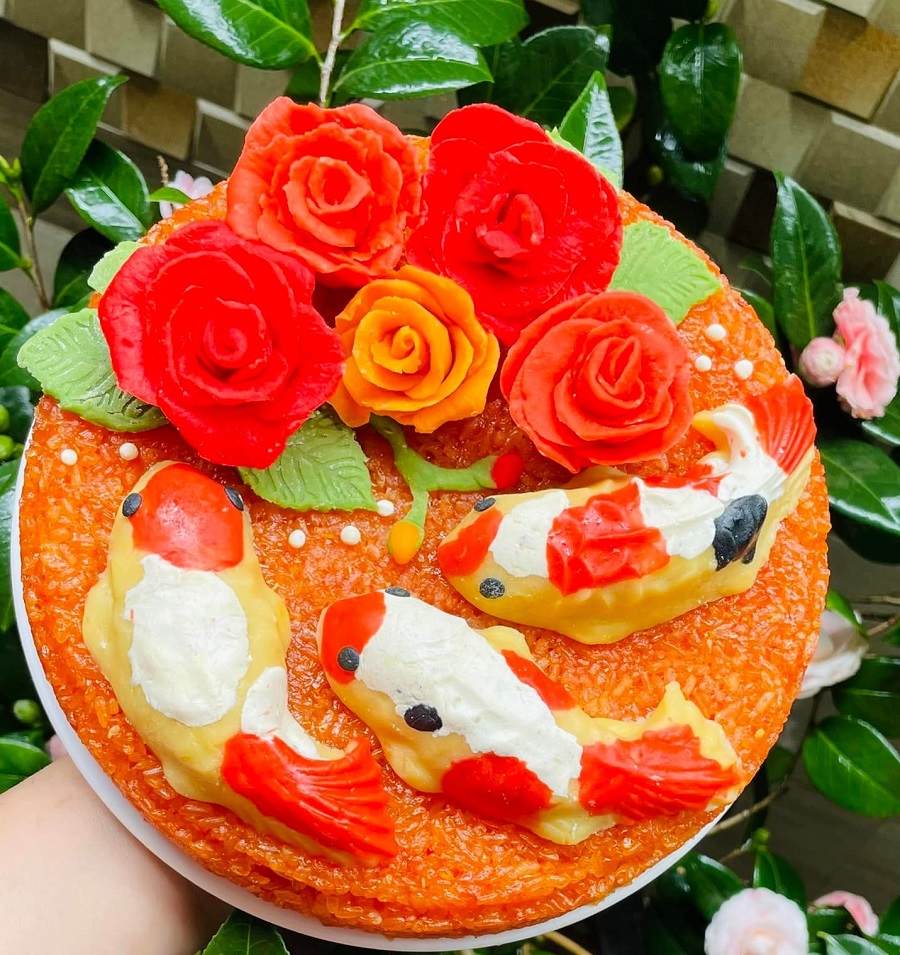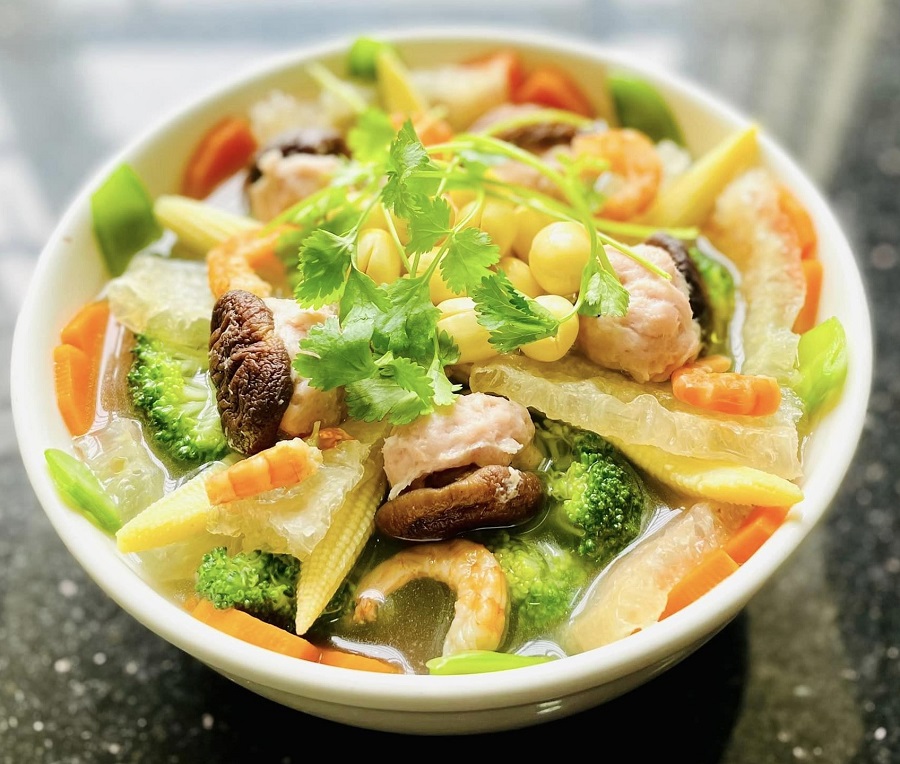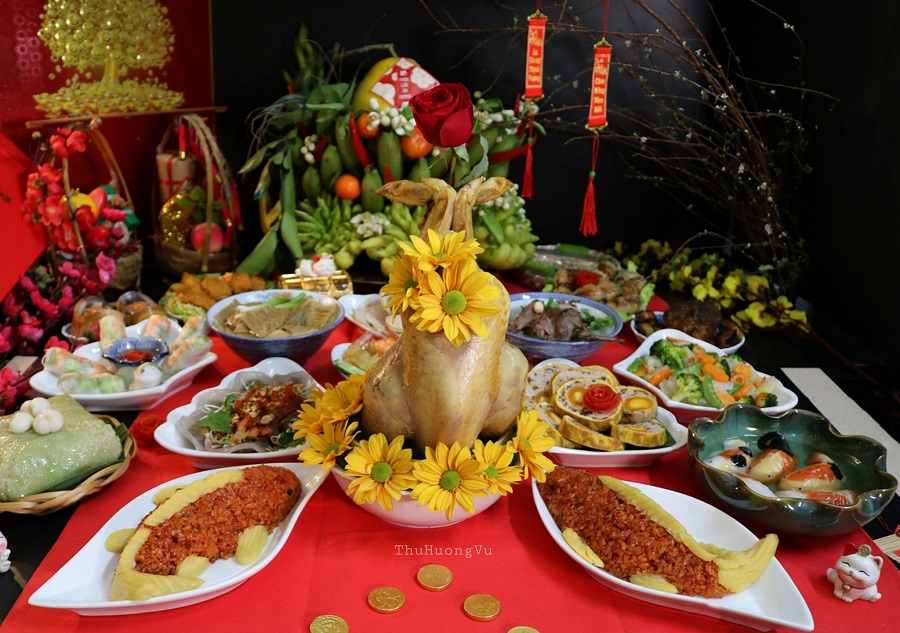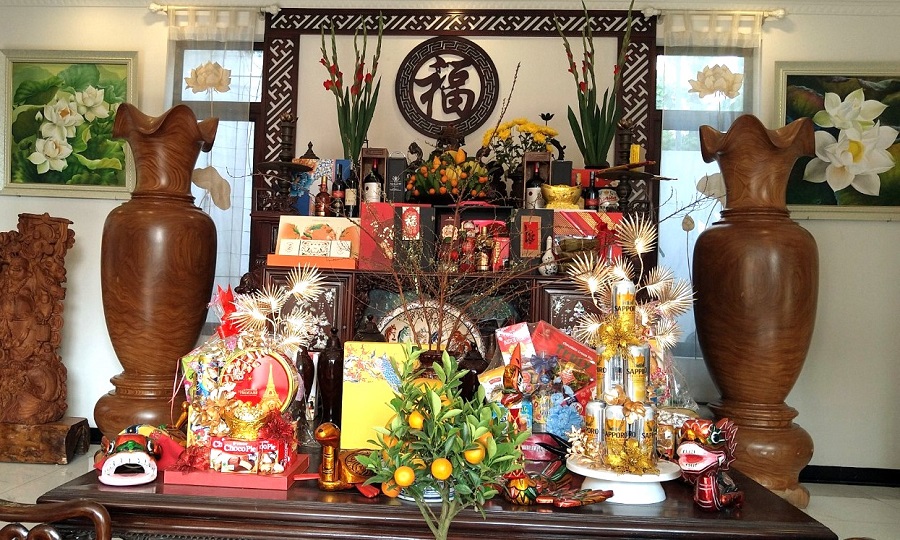Traditional Hanoi food trays for Tet holiday
Hanoians' finesse of eating is most evident in the traditional festive food tray, with dozens of beautifully presented dishes each.
Every time when Tet is at the doorstep, I fondly recall the scene of my entire family busily engaged in holiday preparations some dozens of years ago, when I was a child and my dear parents were still around.
The old Tet nostalgia
| A traditional Tet food tray of Hanoian prepared by renowned local culinary expert Nguyen Phuong Hai. Photo courtesy of Phuong Hai |
“My babies' daddy, take the pair of copper trays for the children to clean!” When my mother called out so, that means the family is going to have a party. The joy of being able to eat delicious food made us, the three little girls in the family, flutter for days.
The heavy chores for children such as cleaning bowls, plates and chopsticks or brushing the family’s pair of copper trays, among others, suddenly turned out to be easy tasks.
The process of preparing for the party went so smoothly that there was no conflict between the three girls, which was a very strange thing for mom as she usually witnessed trivial arguments every day.
Normally, my sisters and I just enjoy that peace twice a year. One was Vietnamese traditional New Year's Eve and the second was my grandfather's death anniversary in the middle of the year.
My house was located in Hanoi's Old Quarter, on a street formerly known as Bong Tho Nhuom, the name which later was shortened to Tho Nhuom.
The pair of copper trays - the precious household items - were scrubbed and washed by my sisters with Red River sand and home-made batch for hours.
The smell of green copper rust mixed with the sour smell of the batch was very uncomfortable. But later, these copper trays turned so brightly shiny that they could be used as mirrors. They are going to carry delicious food.
Brilliant colors of Tet worshiping dishes
| A simple vegetarian food tray for worshiping Land Genie and the Kitchen God arranged by Thuy Duong. |
In my memory, every tray prepared by my mother looked like a true work of art. And mom was a talented artist who created such wonderful masterpieces. The artworks are not only made by her skillful hands, but also by her love for family and respect for her ancestors.
Typically, a traditional Tet food tray of Hanoians always includes ‘eight plates’, each carrying one dish and ‘eight bowls’ each serving one kind of soup. They might be ‘eight plates’ and ‘six bowls’ or sometimes, ‘six plates’ and just ‘four bowls’ depending on the family budget and habit, but they’re always in even numbers.
On the bright copper tray, a variety of food shows their beauty. Gio thu or pig’s ear and pork paste dish looks like a piece of brocade fabric with the white color of the pork and the dark brown of dried fragrant mushroom.
Xoi gac or steamed sticky rice with Gac fruit dish in vividly reddish color.
| The special version of steamed sticky rice with Gac fruit dish for worshiping prepared by Ha Vu |
Banh chung or squared sticky rice cake looks like a giant piece of jade somehow, shining under the light. A platter of fat yellow boiled chicken is adorned with strands of green lemon leaves. Eaten along with squared sticky rice cake as a side dish are the sweet and sour flower-shaped carrot and kohlrabi salad. And yet, there is also a dish of jelly-frozen pork and a plate of pickled onion.
The last dish on display is aromatic nem ran or deep-fried spring rolls prepared from pork, crab meat, and vegetable stuff.
Interspersed between dry dishes, there are about two to three kinds of canh or so-called vegetable soups kept in the ancient bowls called ‘bat chiet yeu’ – the blue terracotta bowl features a funky shape in which the mouth is wide while the body is narrowed, thus, the few food it carries seems plentiful.
A bowl of canh mang or braised dried bamboo shoots with pig leg is displayed along with white onion, looks glistening fat while the other bowl carries mixed soup cooked from dried pork skin, peeled shrimp, ivory cauliflower, fragrant mushroom, flower-shaped carrot, green peas or Pisum sativum and a piece of white tenderloin.
| A bowl of canh bong tha or mixed soup for Tet prepared by Ha Vuong |
The piping hot delicious vermicelli bowl is cooked with cock’s heart and dried fragrant mushroom is ready to be served along with chopped green onions and aromatic herbs. A pure bowl of fish sauce is placed right next to the prime plate of boiled chicken for diners’ convenience.
A sweet and sour dipping sauce bowl needs sophisticated preparations with plenty of dried garlic and some chili slices to help enhance the flavor of the crispy hot spring rolls.
For dessert, there are the dishes of golden green bean paste and the dark brown che con ong or sweet ‘Bee’ rice paste cooked from sticky rice, molasses, and ginger that are still on display on the ancestors’ altar.
The Hanoi Tet holiday food platter is always a gradation of enjoyment, starting with sight, smell, and then taste. Each dish is prepared with care, bright colors, and rich ingredients from the forests, the sea, and the vegetables and poultry raised in the northern delta.
The most typical dish in the forest is bamboo shoots, especially ‘pig's tongue bamboo shoots’ - the type of dried bamboo shoots carefully selected by the housewives that are used as main ingredients for the stewed dish of bamboo shoots with pork legs or ribs.
Dried bamboo shoots are made from young shoots, which are dried in the sun throughout the summer and saved for the Tet holidays.
| The dishes on Tet food tray may change over time, but their meaning remains the same for decades. A Tet food tray prepared by Huong Vu |
Hanoians prefer forest mushrooms for their special aroma, and love to cook the ingredient in their classic dishes such as mixed soup, spring rolls or frozen meat.
The ingredients from the sea that Hanoians often need for the Tet food tray are shrimp and crab. Spring rolls with crab and pork meat are always a traditional Vietnamese dish that is popular with everyone, including foreigners.
Besides, the mixed soup also needs some peeled shrimp or dried shrimp to make the broth sweet with a little flavor of the sea.
Finally, the dish of the Northern Delta naturally plays a fundamental role. Pork, chicken, river fish, fruits, vegetables, among others, are all available in the villages surrounding the former ancient Thang Long Citadel.
In many years away from our old townhouse, whenever Tet came, I could not help but remember the moment of sacred Traditional New Year’s Eve in my childhood. Dad wore his best suit, Mom in her beautiful Ao dai, followed by the kids, they stood in front of the family ancestors’ altar, praying for a very good year ahead.
The brilliant colors of peach blossom, the vivid yellow of chrysanthemum, the fragrance of the incense, and the flavors of Tet dishes on the altar make an unforgettable moment of life.
The spirit of culture is sometimes the convergence of small elements, such as the traditional food trays of Hanoians. Not only the food itself but also the presentation, the reception and the way it is conveyed to others, seem to express the kindness of the owner.
Traditional food tray for Tet is the cultural transmission of an adaptive lifestyle blended with the natural environment and geographic region.
| An altar for Tet holiday arranged by Thuy Duong. Red and Yellow are long-time considered the colors of Tet. |

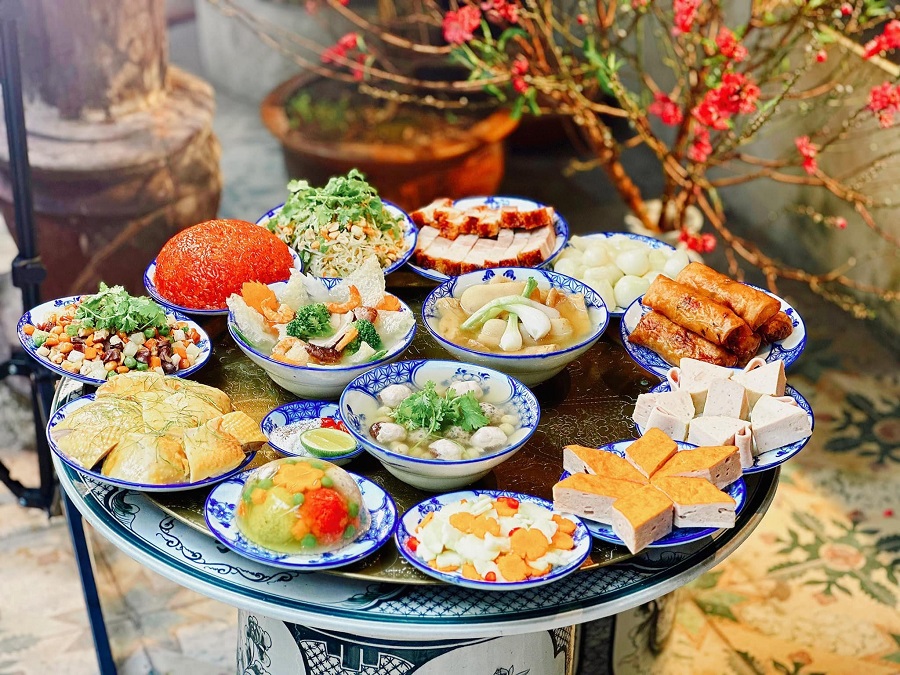
.jpg)
